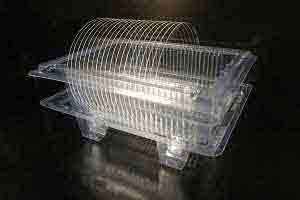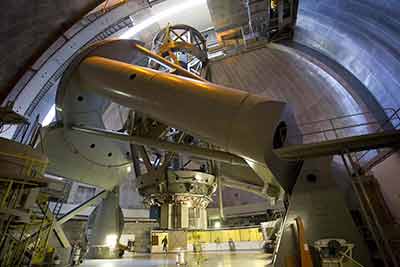Borosilicate Glass Wafer R&D Applications
Buy Borosilicate Glass Online!
Borosilicate glass is strong and durable, making it a great choice for many different applications. It is less expensive than other types of glass, while still providing the strength and durability you need.
UniversityWafer, Inc. stocks borosilicate glass wafers for research and production.
Fill out the form below for an immediate quote!
Borosilicate Glass Wafers in Soft Plastic Cassette
Borosilicate glass has several unique properties, including low thermal expansion, which reduces material stress caused by temperature gradients. Its high heat-resistance allows scientists to study tiny  organisms without worrying about cracking. It is a popular material for telescopes, as it can withstand extremely high temperatures and a range of temperature changes. However, it does break when heated rapidly. Therefore, it is best used in applications that require an extreme level of safety.
organisms without worrying about cracking. It is a popular material for telescopes, as it can withstand extremely high temperatures and a range of temperature changes. However, it does break when heated rapidly. Therefore, it is best used in applications that require an extreme level of safety.
Please let us know which keywords below that you used to find us.
Borosilicate Glass Sheet
What is Borosilicate Glass
Borosilicate Advantages
borosilicate glass sheets
borosilicate glass properties
borosilicate melting point
Borofloat 33
Borofloat Glass
Borosilicate Glass Wafer
Pyrex 7740
Borosilicate Wafers
Pyrex vs Borosilicate
Pyrex vs Borosilicate
Borofloat 33 Glass Price
Borofloat 33 datasheet
Borofloat 33 pyrex
Borofloat 33 cite
Borofloat 33 properties
Borofloat 33 index
Borofloat 33 chemical composition
Borofloat 33 index refraction
borosilicate glass sheet suppliers
schott borofloat 33
schott borofloat
borofloat 33 glass
pyrex wafer
borosilicate glass sheet price
7740 pyrex
anodic bonding glass to silicon
pyrex 7740 glass wafer
Borosilicate Trade Names
Borosilicate glass wafers are made by many companies. Below are their trade names:
- Borcam
- Borosil
- Duran
- Pyrex
- Supertek
- Suprax
- Simax
- BSA 60
- BSC 51 (by NIPRO)
- Heatex
- Endural
- Schott
- Refmex
- Kimble
- MG (India)
Is Borosilicate Glass Heat Resistant
A borosilicate glass is durable enough to withstand high heat and corrosive materials. It is dishwasher safe and microwave safe, making it a versatile and environmentally-friendly material. It can also withstand very high temperatures, making it an ideal choice for hot liquid storage. In addition to being environmentally friendly, borosilicate glass can withstand all types of temperatures, and it won't degrade, which is a great bonus for the environment. It will also last a lifetime, unlike plastic and other materials.
Is Borosilicate Glass Breakable
Another benefit of borosilicate glass is its strength. It is harder than soda glass, and can handle higher temperatures. It is also more resistant to breakage, so it is often used in scientific instruments. Because of its strength, borosilicate glass is a great choice for microscope and telescope lenses. Its high temperature tolerance makes it a great material for stage lights, guitar slides, and art construction. It is also more durable than other materials.
Borosilicate glass is harder than soda-lime glass. On the Mohs scale, diamond is the hardest mineral, while borosilicate is the softest. On the other hand, it is also less dense than soda-lime glass. This is due to the lower atomic mass of boron. But, its low density makes it more suitable for use in chemistry laboratories and other environments where extreme temperatures are a factor.
Uses of Borosilicate Glass
Borosilicate glass is one of the most widely used materials. Its high temperature resistance is another benefit. Compared to quartz, borosilicate glass is very strong, but it is not as dense as quartz, making it a popular material for laboratory equipment. Its low temperature tolerance makes it an ideal choice for many different uses. While it is less expensive than quartz, borosilicate glass is also more affordable than other glass products.
The borosilicate glass's high temperature resistance makes it an excellent material for telescopes. The material is used for the mirrors in reflecting telescopes. This glass resists thermal shock and allows for very precise mirror surfaces. The 200 inch mirror in the Hale Telescope is made of a borosilicate glass. Its durability makes it a perfect material for lab equipment. It can be moulded into tubes and drawn into custom shapes.
Borosilicate Glass Examples
In addition to high-temperature environments, borosilicate glass is also popular in high-intensity lighting systems. This glass is ideal for industrial applications that require high amounts of heat and is used in stage and studio lighting. In addition, it is commonly fabricated into high-strength sight glasses for use in a wide range of industries involving extreme temperatures. This material's low coefficient of thermal expansion makes it a good choice for laboratory applications.
Due to its high temperature resistance, borosilicate is also very stable and can be used for optical devices. This is why borosilicate glass is commonly used for studio spotlights and HID lamps. A recent study has involved altering the chemical composition of a borosilicate glass to make a solid state display. The altered chemical composition of borosilicate can also be used to manufacture W-LEDs.
Borosilicate Glass Properties
In 1922, borosilicate glass was first used for pipes. It is a good material for pipe-making, as it is durable and does not crack easily. It also offers high thermal shock resistance, and is better at absorbing high temperatures. In chemistry, borosilicate glass is used for labware. This material is ideal for the fabrication of semiconductors. In the early 1970s, a pyrex-like liquid was created that resembled a diamond.
Borosilicate Sensor Applications
Buy as few as One Borosilicate Wafer! We have all diameters in stock and ready to ship!
Below are just some uses for our Borofloat 33 Wafers sold in small quantities and large.
Borosilicate Borofloat 33 Electronic Sensor Inter digitated Electrode Arrays
Borosilicate glass used as acceleration, pressure and gyro sensors in automobiles, to switch on light in telecommunications.
Borosilicate Electronic sensor
![]()
Borosilicate Glass
![]()
Borosilicate Glass Sensor

Borofloat 33 (BF33) Panel Photon Counting Imaging Detectors for Astronomy and Night Time Sensing
Borofloat 33 Specs
4" Borofloat 33
Diameter 100 +/-0.3mm
Thickness: 500 +-25um
Also have 175 +/-25um
Double Side Polish
Roughness: <1.5nm (Ra)
TTV: <10um
ground c-shape edge with primary flat acc.to SEMI surface cleanness: scratch-dig 60-40 according to MIL-PRF-13830 clear apeture: diameter 90nm cleanroom packed class 1000 according Fed 209
What is Borosilicate Glass Used For?
- Appliances (interior oven doors, fittings in microwave appliances, window panels for fireplaces)
- Environmental engineering, chemical industry (resistant linings and sight glasses for reaction vessels, microfluidic systems)
- Lighting (protective panels for spotlights and high-power floodlights) Photovoltaics (glass for solar collectors)
- Precision engineering, optics (optical filters and mirrors etc.)
- Medical technology, biotechnology (slides, biochips, titration plates, DNA sequencers, microfluidic systems)
- Semiconductor engineering, electronics, sensors (wafers, display glass) Safety (bulletproof glazing)
Borosilicate Glass Used in Implated Medical Devices
Boroslicate can be found in the following:
- Prosthetic eyes
- Artificial hip joints
- bone cements
- dental composite materials
- breast implants
Borosilicate Glass Wafers Used In Electronics
Borosilicate in wafer form with, for example a spec of 100mm 500um DSP are used for bonding silicon and other substrates in the semiconductor industry to manufacture Micro Electro Mechanical Systems or MEMS.
Borosilicate Glass Wafers Used In Lighting
The best flashlights use borosilicate glass instead of lower quality plastics for the lens for better light transmission. Other lighting applications include high-intensity discharge (HID) lamps.
Organic light-emitting diode (OLED) use 1mm thick glass.
Borosilicate Glass Wafers Used In Lighting
Space applications include reflecting telescopes for its resistance to thermal shock. This allows for precise mirror surfaces that won't distort under extreme temperature variations.

Hale Telescope's has 200 inch mirror that is made of borosilicate glass.
